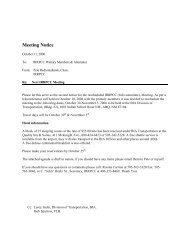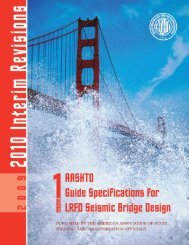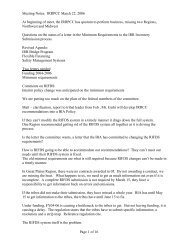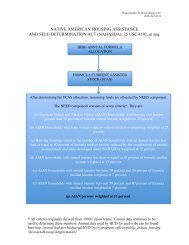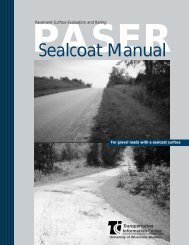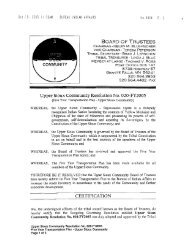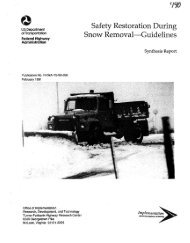Safety in Welding, Cutting, and Allied Processes
Safety in Welding, Cutting, and Allied Processes
Safety in Welding, Cutting, and Allied Processes
You also want an ePaper? Increase the reach of your titles
YUMPU automatically turns print PDFs into web optimized ePapers that Google loves.
ANSI Z49.1:1999<br />
Table 1<br />
Guide for Shade Numbers<br />
M<strong>in</strong>imum<br />
Suggested*<br />
Electrode Size Arc Current Protective Shade No.<br />
Operation 1/32 <strong>in</strong>. (mm) (A) Shade (Comfort)<br />
Shielded metal arc weld<strong>in</strong>g Less than 3 (2.5) Less than 60 7 <br />
3—5 (2.5—4) 60—160 8 10<br />
5—8 (4—6.4) 160—250 10 12<br />
More than 8 (6.4) 250—550 11 14<br />
Gas metal arc weld<strong>in</strong>g <strong>and</strong> Less than 60 7 <br />
flux cored arc weld<strong>in</strong>g 60—160 10 11<br />
160—250 10 12<br />
250—500 10 14<br />
Gas tungsten arc weld<strong>in</strong>g Less than 50 8 10<br />
50—150 8 12<br />
150—500 10 14<br />
Arc carbon (Light) Less than 500 10 12<br />
Arc cutt<strong>in</strong>g (Heavy) 500—1000 11 14<br />
Plasma arc weld<strong>in</strong>g Less than 20 6 6 to 8<br />
20—100 8 10<br />
100—400 10 12<br />
400—800 11 14<br />
Plasma arc cutt<strong>in</strong>g (Light)** Less than 300 8 9<br />
(Medium)** 300—400 9 12<br />
(Heavy)** 400—800 10 14<br />
Torch braz<strong>in</strong>g 3 or 4<br />
Torch solder<strong>in</strong>g 2<br />
Carbon arc weld<strong>in</strong>g 14<br />
<strong>in</strong>.<br />
Plate Thickness<br />
mm<br />
Suggested*<br />
Shade No.<br />
(Comfort)<br />
Gas weld<strong>in</strong>g<br />
Light Under 1/8 Under 3.2 4 or 5<br />
Medium 1/8 to 1/2 3.2 to 12.7 5 or 6<br />
Heavy Over 1/2 Over 12.7 6 or 8<br />
Oxygen cutt<strong>in</strong>g<br />
Light Under 1 Under 25 3 or 4<br />
Medium 1 to 6 25 to 150 4 or 5<br />
Heavy Over 6 Over 150 5 or 6<br />
*As a rule of thumb, start with a shade that is too dark to see the weld zone. Then go to a lighter shade which gives sufficient view of the weld zone<br />
without go<strong>in</strong>g below the m<strong>in</strong>imum. In oxyfuel gas weld<strong>in</strong>g or cutt<strong>in</strong>g where the torch produces a high yellow light, it is desirable to use a filter lens that<br />
absorbs the yellow or sodium l<strong>in</strong>e <strong>in</strong> the visible light of the (spectrum) operation.<br />
**These values apply where the actual arc is clearly seen. Experience has shown that lighter filters may be used when the arc is hidden by the workpiece.<br />
7



